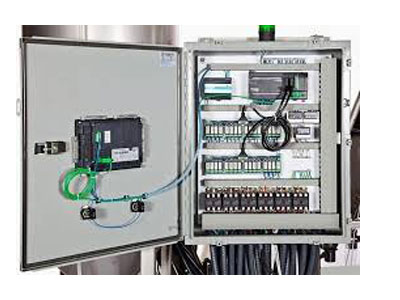What Are The Differences Between MCC And VFD Panels?
Key Takeaway
MCC (Motor Control Center) panels and VFD (Variable Frequency Drive) panels are used for different purposes in motor control systems. An MCC panel is a centralized system designed to manage and protect multiple electric motors. It houses motor starters, circuit breakers, and control devices to ensure safe operation and protect motors from overloads. MCC panels are mainly focused on starting, stopping, and monitoring motor operations.
On the other hand, a VFD panel controls the speed and torque of AC motors by adjusting the electrical supply’s frequency. It is used in applications like fans, pumps, and conveyors where variable motor speeds are essential. VFD panels help save energy and improve motor efficiency. The key difference is that MCC panels provide centralized motor control, while VFD panels focus on speed regulation. Both serve specific roles in industrial motor management.
Definition and Purpose of MCC and VFD Panels
MCC Panels are centralized units designed for the control and protection of electric motors. They house motor starters, circuit breakers, relays, and other control devices that facilitate motor operation, including starting, stopping, and overload protection. MCC panels are essential for systems that require high reliability and consistent motor management, such as conveyor belts, pumps, and industrial machinery.
VFD Panels are specialized control panels that include variable frequency drives. VFDs adjust the speed of electric motors by varying the frequency and voltage of the power supply. This ability to control motor speed and torque allows for optimized energy use, reduced mechanical wear, and enhanced process control. VFD panels are often used in applications that benefit from adjustable motor speeds, like HVAC systems, water treatment plants, and fan-driven equipment.
Purpose:
MCC Panels: Manage and protect motors and ensure smooth operation.
VFD Panels: Control motor speed, providing energy efficiency and adaptability to varying operational needs.

Comparison of Control Mechanisms
The control mechanisms in MCC and VFD panels highlight their distinct functions:
MCC Panels:
Use traditional methods such as direct-on-line (DOL) starters, star-delta starters, and soft starters for motor control.
Operate at a fixed speed; control is limited to on/off switching and basic speed adjustments.
Provide essential protection features like overload relays and circuit breakers.
VFD Panels:
Use an inverter and rectifier to modify the input power frequency, allowing precise control over the motor’s speed and torque.
Enable variable speed control, which optimizes the power used by the motor and adjusts output based on real-time requirements.
Advanced VFDs can also include braking, torque control, and energy-saving algorithms, enhancing operational efficiency.
Energy Efficiency and Cost Considerations
The energy efficiency and cost considerations for MCC and VFD panels are important for long-term operational budgeting:
MCC Panels:
Energy Efficiency: Typically operate motors at a constant speed, which may lead to higher energy consumption when variable speeds could be more efficient.
Cost: MCC panels are generally less expensive to purchase and maintain than VFD panels. They are more budget-friendly when the application does not require speed modulation.
Operational Costs: Higher due to inefficiency when handling tasks that could benefit from variable speed control.
VFD Panels:
Energy Efficiency: Significantly more efficient for applications where motor speed can be adjusted. VFDs lower energy usage by matching motor speed to load requirements, leading to cost savings over time.
Cost: Higher initial purchase price, as VFD panels include more complex technology.
Operational Costs: Lower over time due to improved energy efficiency and reduced wear and tear on motors.
Applications in Industrial Systems
Both MCC and VFD panels find applications across various industries, but their suitability varies:
MCC Panels:
Used in industries where motor control is straightforward and variable speed isn’t needed.
Common in manufacturing facilities for conveyor belts and other machinery that operate at a constant speed.
Water treatment plants and mining operations often use MCC panels for pumps, crushers, and other standard motor-driven equipment.
VFD Panels:
Ideal for systems where variable speed control enhances productivity and energy efficiency.
HVAC systems use VFD panels to regulate fan speeds, optimizing energy use and maintaining temperature control.
Pumps in water treatment facilities can adjust speed to match flow rates, reducing energy usage.
Fan systems in industrial plants can benefit from variable speed to adjust airflow as needed.
Advantages and Limitations of Each Panel Type
Understanding the advantages and limitations of each panel type helps in choosing the best option for your requirements:
MCC Panels:
Advantages: Reliable, simpler design, cost-effective for fixed-speed applications, straightforward maintenance.
Limitations: Lack of speed control, less energy-efficient, limited functionality for variable load conditions.
VFD Panels:
Advantages: Enhanced energy efficiency, speed and torque control, reduced mechanical wear, improved process control.
Limitations: Higher initial cost, more complex to install and maintain, potential for electromagnetic interference if not properly shielded.
Conclusion
MCC and VFD panels each serve important functions within industrial operations. MCC panels are ideal for straightforward, fixed-speed motor control, offering reliability and affordability. In contrast, VFD panels provide enhanced energy efficiency and flexibility, making them suitable for applications where adjustable motor speed and power optimization are crucial. Evaluating the unique needs of your industrial system, considering factors like cost, energy efficiency, and application type, will guide you in choosing the right panel for your operation.

